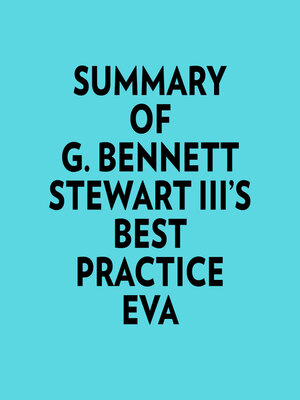
Sign up to save your library
With an OverDrive account, you can save your favorite libraries for at-a-glance information about availability. Find out more about OverDrive accounts.
Find this title in Libby, the library reading app by OverDrive.



Search for a digital library with this title
Title found at these libraries:
| Loading... |
Please note:This audiobook has been generated using AI Voice. This is a companion version & not the original book. Sample Book Insights: #1 EVA is a technique for improving the planning process and a framework for valuing decisions. It is the basis for bonus plans that turn managers and employees into owner/ operators. It is a great way for a management team to communicate its commitment to creating value for its investors. #2 The cost of capital is not a cash cost you can see and touch. It is an opportunity cost, the cost to lenders and shareholders of giving up the returns they could otherwise expect to earn from investing their money in a stock and bond portfolio. #3 The cost of capital is the amount of money a company loses due to the interest that it pays on its debt and the interest that it earns on its equity. It is a real cost that can be estimated using modern financial techniques. #4 The capital charge is the amount of money a company needs to spend to obtain, and keep, an operating profit. It is computed by multiplying the cost of capital rate times the capital, which in this case is $1,000 invested in net business assets and a cost of 10 percent. The company must earn $100 in NOPAT to just break even.






